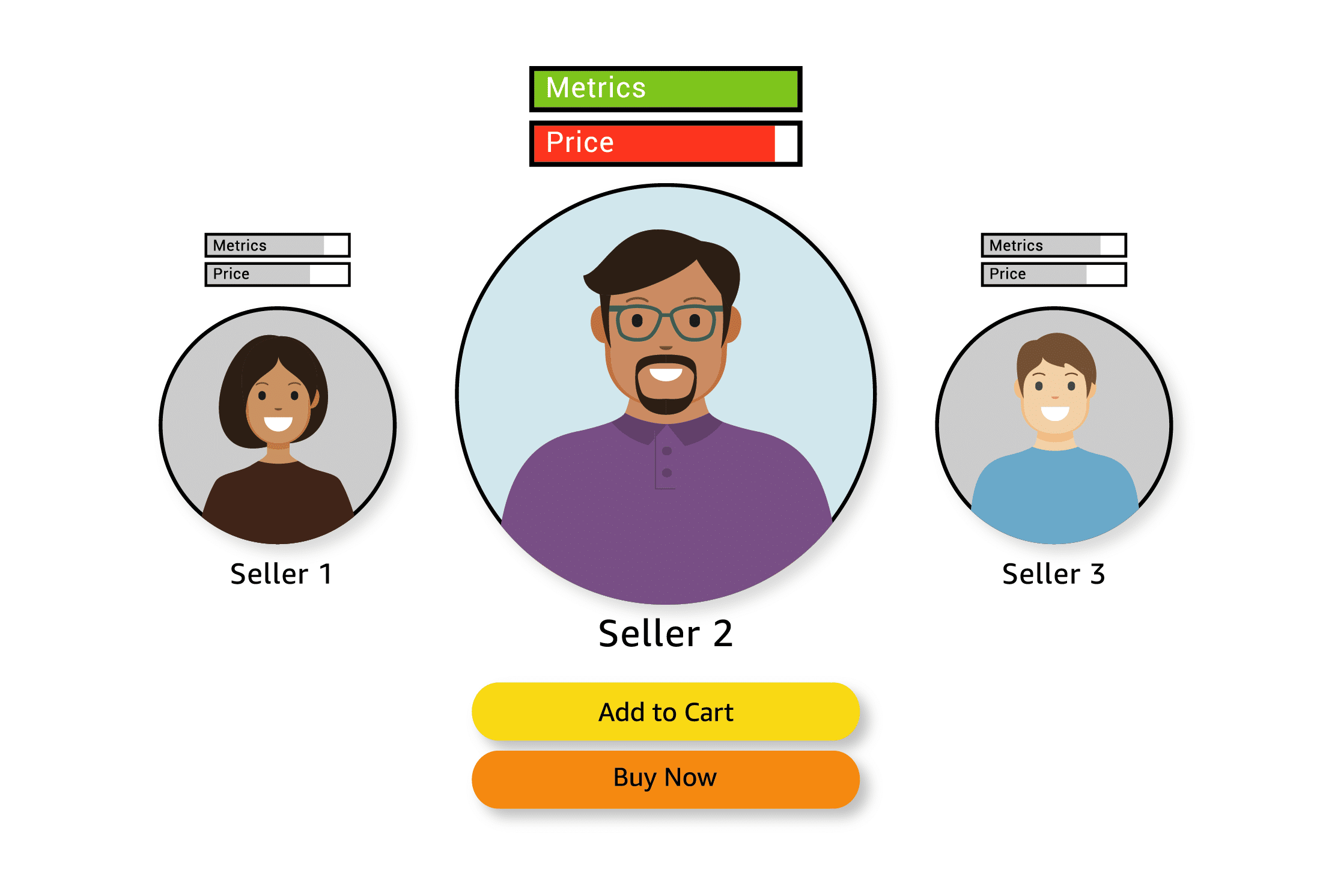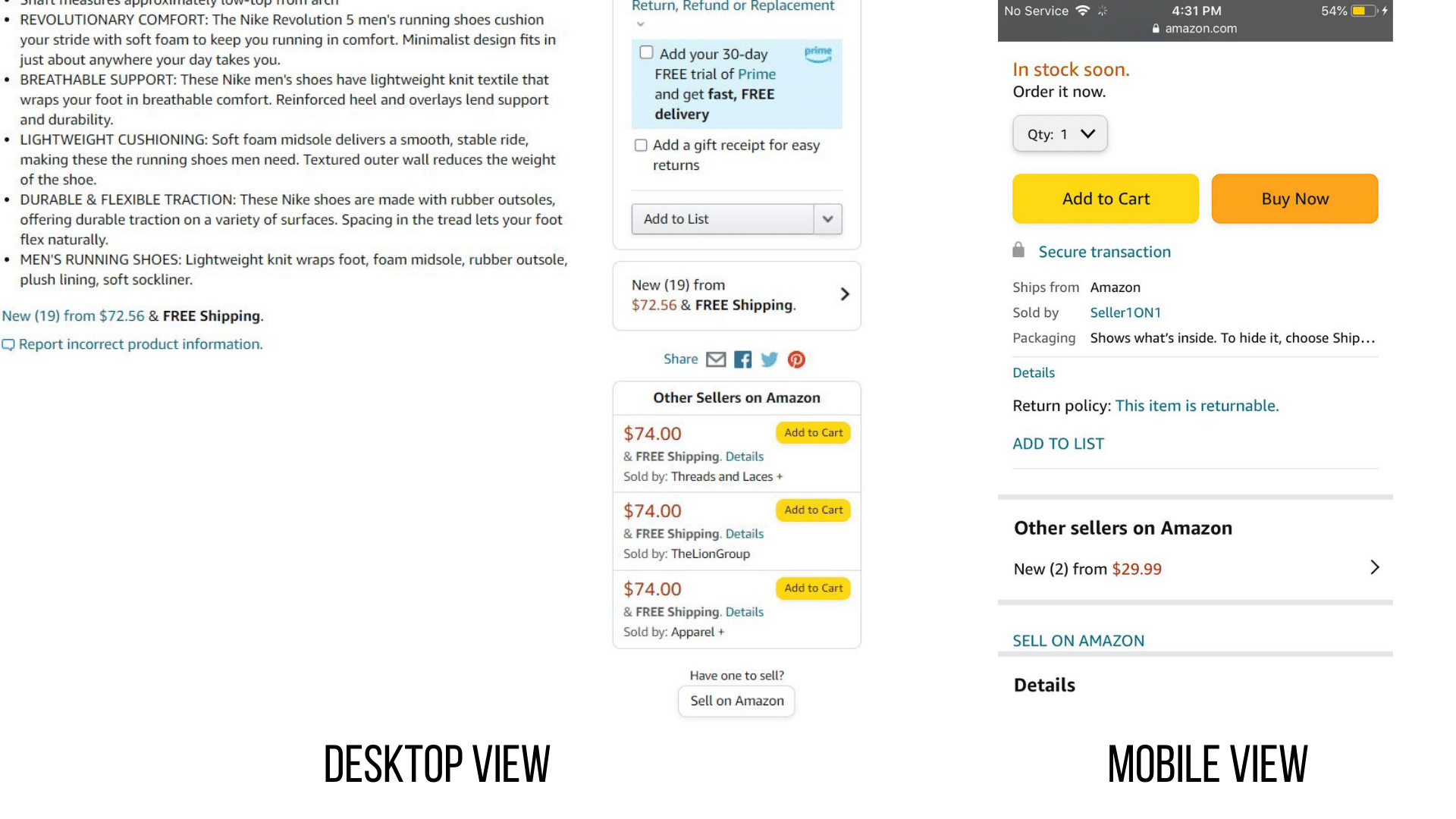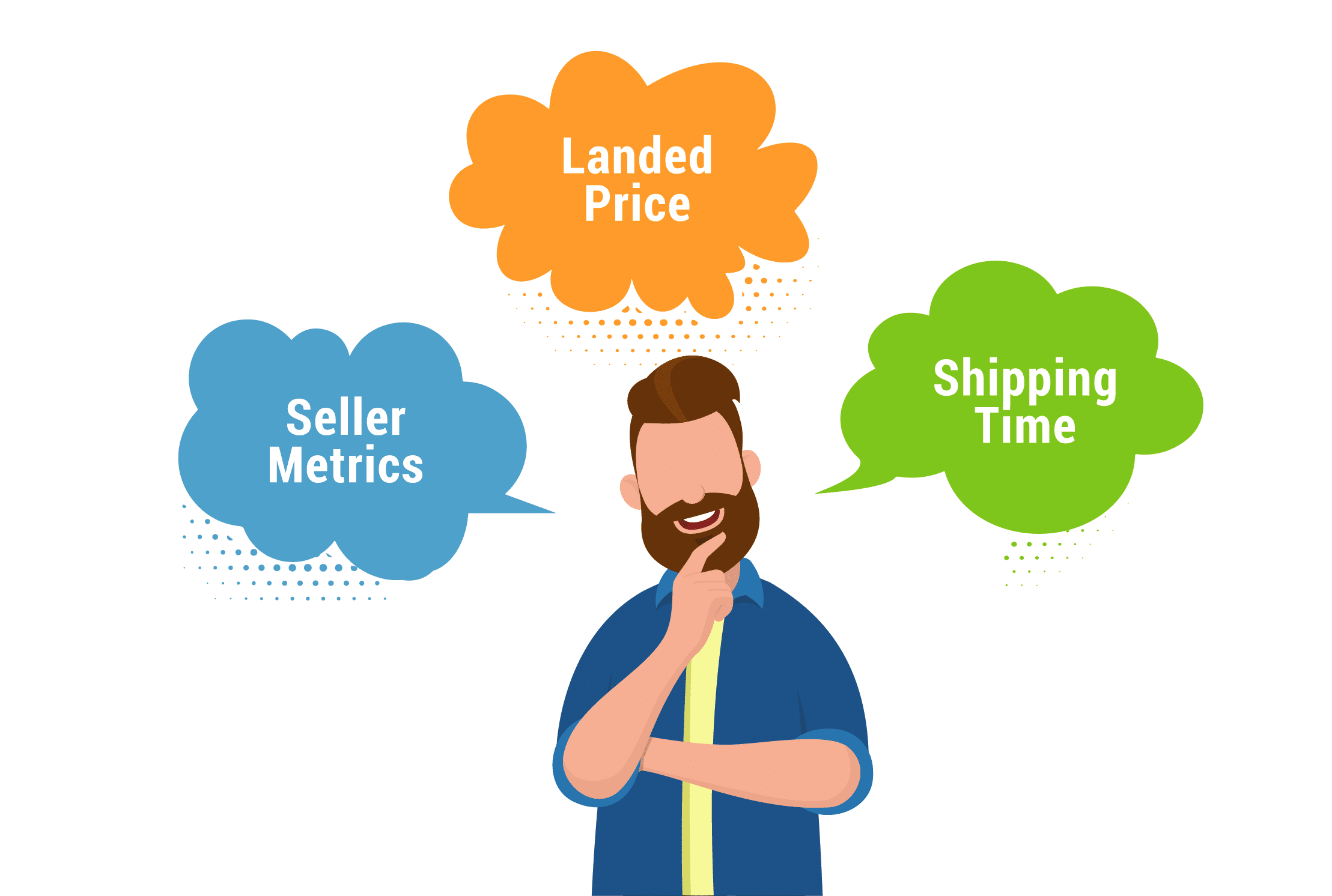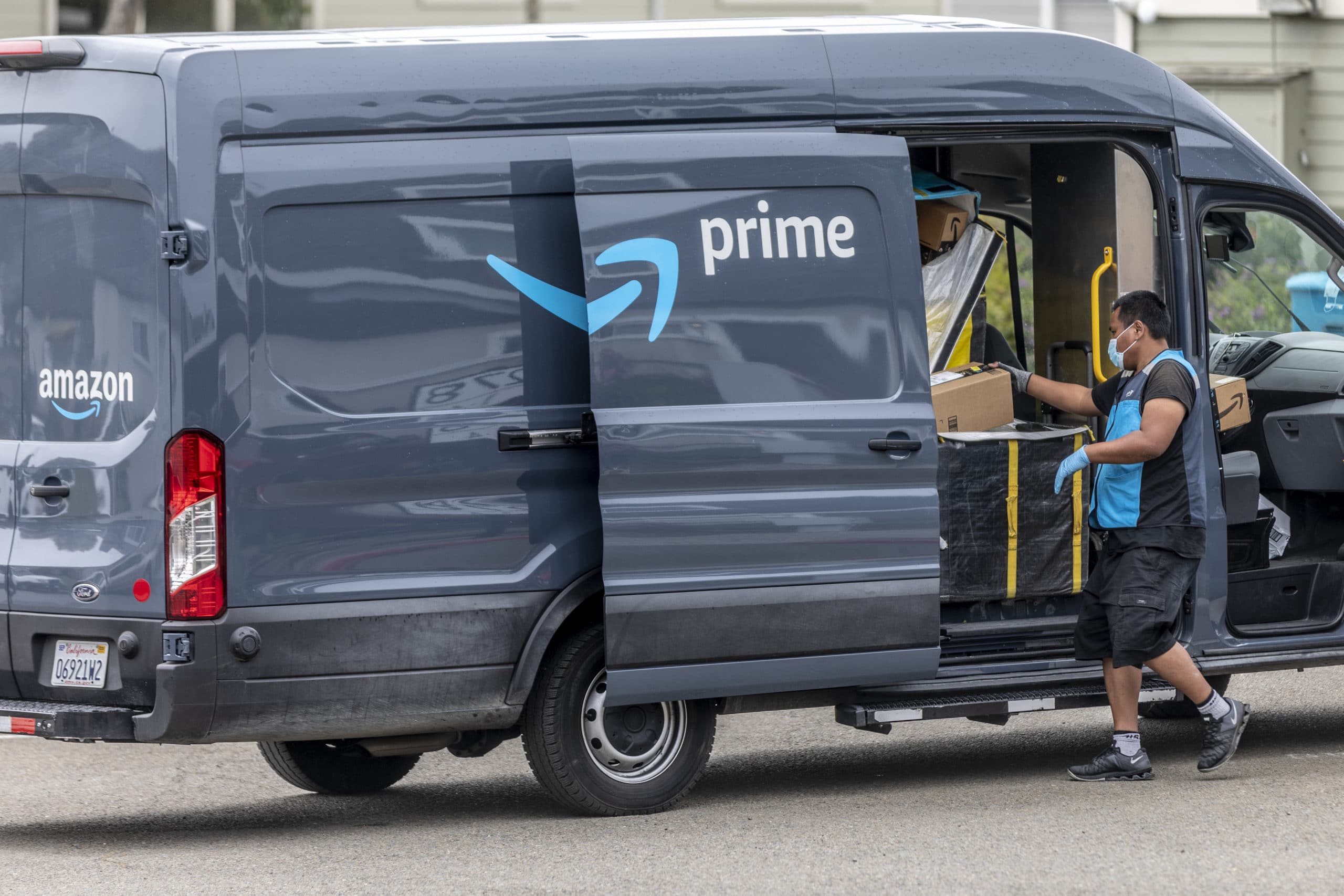How to Win the Amazon Buy Box

For buyers, the Buy Box is nothing but a way to purchase products. It’s a little more complicated for sellers. Some think of it as a prize that should be won. Others don’t really pay that much attention to it.
This article will cover the basics of the Amazon Buy Box: what it is, how it works, who should care about it, and how to win and lose it.
Related Reading: 12 Terms New Amazon Sellers Need to Know
Contents
- What Is the Amazon Buy Box and How Does It Work?
- Why Is Winning the Amazon Buy Box Important?
- How to Be Buy Box Eligible
- How Can I Check If My Products Are Eligible for the Amazon Buy Box?
- The Amazon Buy Box Algorithm: How Does Amazon Determine Which Seller Gets the Buy Box?
- How to Win the Amazon Buy Box
- How You Can Lose the Amazon Buy Box
- Conclusion
What Is the Amazon Buy Box and How Does It Work?
The Amazon Buy Box is that part of the listing that allows buyers to either add the products to their cart or buy the item immediately.
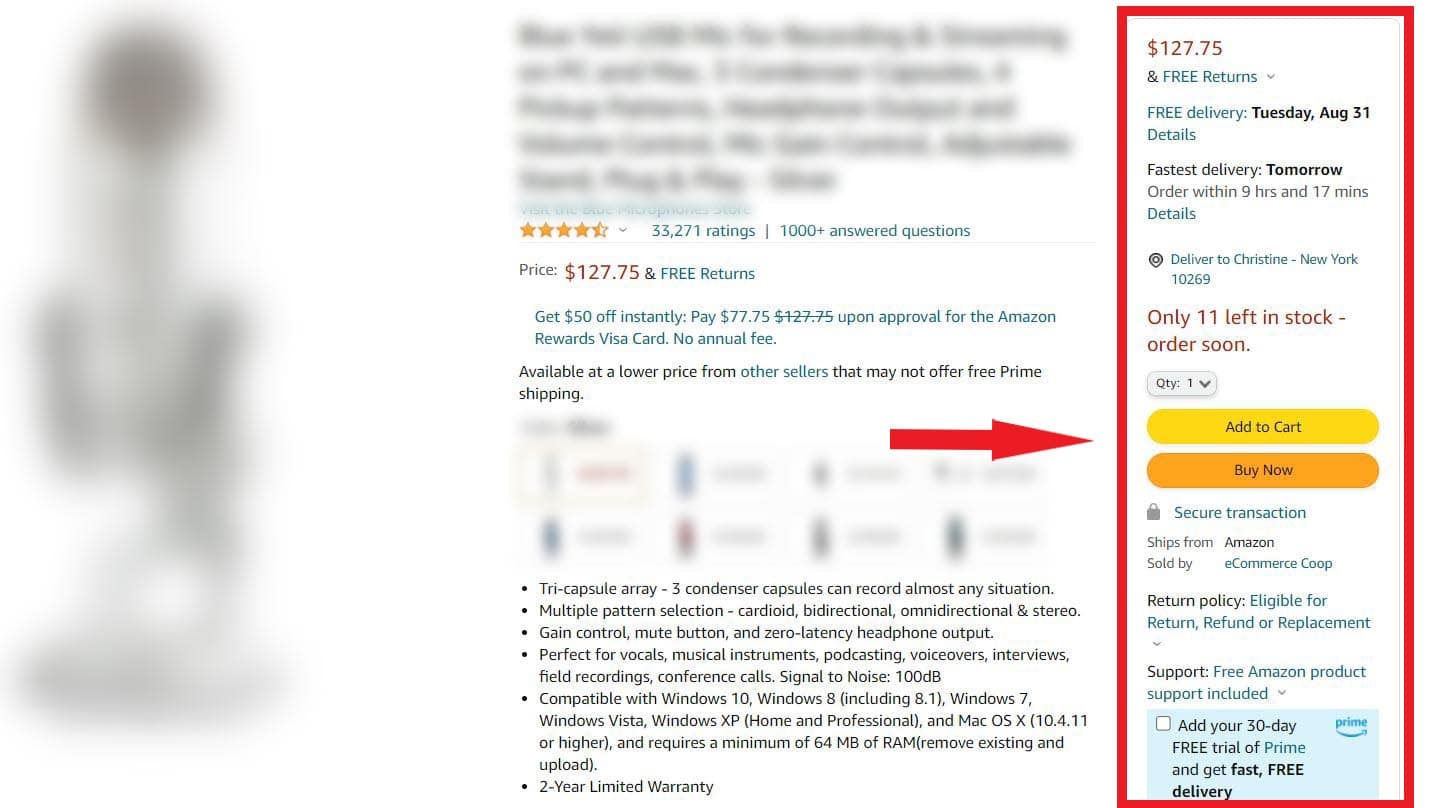
To understand how the Buy Box works, we need to look at how Amazon's catalog works.
Think of it this way. If a seller creates a listing for a particular product, all other sellers have to use that listing if they're selling the same product. If they do so, they can use the same ASIN and even edit the listing.
This is what's referred to as listing piggybacking. Other sellers “piggyback” on an existing listing because Amazon allows only one listing for one unique product.
Amazon does this because it’s more convenient for buyers to look at just one page for every kind of product instead of going through multiple product listings from different sellers.
Take eBay, for example. The buyer has to browse through more pages because each seller has his own unique listing.
Do All Sellers Have to Worry About the Amazon Buy Box?
As a general rule, if you’re a private-label seller, you don’t have to worry much about the Buy Box because you’re guaranteed to win it. This is because you’ll be the only one selling your products on Amazon.
However, you can still lose the Buy Box because of reasons such as listing hijacking (more on this later).
The ones who should really care about the Buy Box are resellers or those who are selling products that they did not manufacture themselves.
Amazon looks at seller metrics, price offers, and other factors to determine which sellers should win a share in the Buy Box. Let’s say that there are 35 sellers on Amazon who are selling a product called the EcomCrew Earbuds. If only 3 out of those 35 sellers qualify for the Buy Box, then they will have to share the Buy Box.
This means that Amazon will “award” the Buy Box to the three qualified sellers. However, not all sellers who share the Buy Box get the same amount of time on it. If Seller C has better metrics and a lower price, for example, he can get a bigger Buy Box percentage.
Why Is Winning the Amazon Buy Box Important?
Around 80 to 90 percent of buyers buy through the Buy Box, so if you don’t “win” it, you’ll have fewer chances of making a sale.
Those who don’t win the Buy Box can still make a sale, but the transaction will have to go through the “Other Sellers on Amazon” section, which is less pronounced. The Buy Box is even more important in mobile because unlike the desktop view, there’s no Add to Cart button that buyers can see immediately.
According to Statista, around 30% of Amazon shoppers shop using their mobile devices.
There’s another reason why winning the Buy Box is important aside from getting the sale, and it has something to do with ads. If you don’t have the Buy Box, your Sponsored Products ads will stop running.
So forget about optimizing your PPC campaigns for now. Your priority should be to make sure you actually win the Buy Box.
Related Podcast: E383: [Amazon PPC Overhaul Part 2] Our Advanced Strategies for Sponsored Products
How to Be Buy Box Eligible
To be eligible for the Amazon Buy Box, you need to meet the following requirements:
A Professional Seller Account. You need to get Amazon’s Professional Plan (currently at $39.99 per month). You will not be eligible for the Buy Box if you only have the Individual Plan ($0.99 per item sold).
Your products must be new. Used products can be bought through the New & Used section, not through the Buy Box. The exception to this are products sold as Amazon Warehouse Deals.
You must have enough inventory. Avoid stockouts as much as possible because if you don’t have the inventory, not only will this affect your product rankings, you will also lose your share in the Buy Box. An exception to this is when the item is backordered, i.e., the buyer already knows it will be shipped at a later date because it’s not yet available.
How Can I Check If My Products Are Eligible for the Amazon Buy Box?
Go to your Seller Central account and click on the following:
Inventory → Manage Inventory
If you don’t see the proper column, click on Preferences and make sure the checkbox next to “Buy Box Eligible” is ticked.
To get an overview of your Buy Box percentage, i.e., how much of the time you’ve won the Buy Box, click on the following:
Reports → Business Reports → Detail Page Sales and Traffic By Child Item
Scroll to the right, and you’ll see the “Featured Offer (Buy Box) Percentage” column. You can also download a CSV file of the table.
The Amazon Buy Box Algorithm: How Does Amazon Determine Which Seller Gets the Buy Box?
If you’re looking for the exact formula that Amazon uses to determine who wins the Buy Box, Amazon has this to say:
“Since seller performance requirements can vary by category and are subject to change, we do not disclose specific targets needed to become an eligible seller; however, becoming an eligible seller requires meeting very high standards and excelling in the qualifying criteria is the best way to work toward achieving this status.”
So they’re very hush-hush about it because their standards are always changing. However, we can be sure that doing well on the following metrics will definitely help:
| Metrics | Definition |
|---|---|
| Order Defect Rate | All orders with a defect as a percentage of total orders during a given 60-day time period. Note: An order has a defect if it results in negative feedback, an A-to-z Guarantee claim that is not denied, or a credit card chargeback. |
| Valid Tracking Rate | All packages with a valid tracking number as a percentage of total packages during a given 30-day time period. *Applies only to seller-fulfilled orders |
| On-Time Delivery Rate | Represents shipments delivered by their estimated delivery date as a percentage of total tracked shipments *Applies only to seller-fulfilled orders |
| Late Shipment Rate | All orders with a ship confirmation that is completed after the expected ship date as a percentage of total orders over both a 10-day or 30-day period *Applies only to seller-fulfilled orders |
Generally, Amazon looks at two factors in determining which sellers will have the Buy Box:
- Seller metrics
- Landed costs
And in case you’re wondering, yes, you can win the Buy Box even against Amazon if its algorithm determines you’re a better choice for the customer. It’s not going to be easy, but it’s not impossible either.
So how do you make sure you get a share in the Buy Box? We’ll cover that next.
How to Win the Amazon Buy Box
The most effective way to get the Buy Box is to be a private-label seller. As mentioned earlier, you are almost always guaranteed to get 100% of the Buy Box.
However, if you’re reading this article, you’re probably a reseller looking for ways to increase your chances of getting a bigger Buy Box share. So here are some of the most important things to look at.
Improve Your Shipping Time
One of the best things about Amazon is that customers can receive their orders faster. This is why your method of fulfillment is crucial.
If you want to get the Buy Box faster, go for FBA (Fulfillment by Amazon). This makes sense because Amazon will be hesitant to award you the Buy Box if they don’t know whether you really have the inventory and whether you can ship it to the customer fast enough.
With FBA, Amazon controls how fast orders are delivered and they can be sure about the availability of inventory (because it’s sitting in their warehouse). So again, to ensure your share in the Buy Box, go for FBA.
Related Course: Take Your FBA Business From 0 to 100
So the question now is, Can you still win the Buy Box without using FBA?
Yes, you can, especially if you’re into Seller Fulfilled Prime. What Amazon ultimately cares about is whether you can deliver the orders to your customers on time. If you sell using FBM, you may have to wait longer to get a share in the Buy Box to earn Amazon’s trust.
If you choose not to go with FBA, you’re gonna need a reliable 3PL on your side.
Reduce Your Landed Price
The landed price is the total amount of a product bought on Amazon, including shipping. To reduce your landed price, you should consider all areas where you can reduce costs.
Start with manufacturing. Negotiate with your supplier for lower prices. Aim to reduce your shipping costs as well by negotiating with your supplier and 3PLs. But before you sit at the negotiation table, there are certain shipping terms you should be aware of.
There are also ways of saving up on FBA and referral fees, so make sure you’re following them.
Related Podcast: E330: Focusing on Logistics to Increase Profitability
However, take note that your efforts to win a share of the Buy Box does not always equate to you narrowing your profit margins even more. Just because a seller has the lowest landed price doesn’t mean he is guaranteed the Buy Box.
If you have really good seller metrics, you can get away with selling your products at a higher price.
Plan Your Shipments to Avoid Stockouts
You can’t win the Buy Box if you don’t have the products ready to ship. So make sure you have a shipping plan ready. Create some buffer time for any contingencies so you don’t find yourself dealing with stockouts.
However, be aware that Amazon can reduce restock limits without warning, so you better have a list of warehouses ready in case this happens.
Improve Your Customer Service
We can’t stress enough how important customers are to Amazon. This is why according to the new CEO, Andy Jassy, they were hesitant at first to let third-party sellers in because they might not be able to provide the same level of service to buyers.
So make sure you respond fast to customer concerns. Keep it under 12 hours as much as possible.
Confront Unauthorized Resellers
Listing hijacking is always a concern for private-label sellers. There are many unauthorized sellers out there looking to bring your brand down. If this happens to you, your customers can receive defective or counterfeit products and leave bad reviews, harming your metrics.
Make sure you’re protecting your brand. Amazon has a couple of seller programs that can help with this, including the following:
How You Can Lose the Amazon Buy Box
Aside from not having inventory and legitimately losing to other sellers who have better metrics and lower prices, there are other ways you can lose the Buy Box.
Algorithm Changes
Every now and then, sellers notice that the Buy Box does not rotate. Instead, they stay on one or two sellers for a long time, making it more difficult for others to get a sale. This usually happens because Amazon tweaked its algorithm, giving more weight to some metrics compared to others.
Prohibited Keywords
Using a prohibited keyword in your listing can cause it to be suspended, a sure way for you to lose the Buy Box. Make sure you follow Amazon’s guidelines at all times.
Defective Products and/or Hijackers
Both of these are related to customer feedback. Customers can leave bad reviews on your listings because they received a defective or counterfeit product.
We’ve already discussed counterfeits and what you can do about them earlier. As for defective products, it can be your fault or that of your manufacturer. Make sure you’re looking out for quality fade even when you’re on the other side of the world by employing quality control inspectors.
Buy Box Suppression vs. Losing the Buy Box
There are times when instead of a Buy Box, we have the “See All Buying Options” button. This means that no seller qualifies for the Buy Box.
It could be that Seller A has no inventory and Seller B and C have priced their products way too high that Amazon deems it better to take the customer somewhere else.
Buy Box suppression is different from losing the Buy Box because in the latter, you’re just losing it to another seller but the Add to Cart and Buy Now options are still available.
Very High or Very Low Prices
It’s not hard to see why Amazon will not give the Buy Box to a seller who prices products too high. But how about if it’s priced too low?
Low prices are attractive to customers, but when the product is super cheap, it’s natural to wonder if there’s something wrong with it. This is why Amazon also takes away the Buy Box when this happens in order to protect customers.
A Note on Price Parity
Before, you can lose the Buy Box by simply offering your products at a lower price outside of Amazon, e.g., your own ecommerce website. In 2019, Amazon ended this, but note that one of the pricing practices that Amazon deems harmful to customers is “Setting a price on a product or service that is significantly higher than recent prices offered on or off Amazon.”
Being Part of the CRaP List
Amazon has a term for products that have very low margins, low retail price points, and short expiration periods: CRaP. It sounds harsh, but it’s apropos. CRaP stands for “Can’t Realize a Profit.” When a product is heavily discounted, for example, Amazon may think that it’s not even worth it. So when you’re developing and pricing your products, make sure you won’t be on the CRaP list.
Conclusion
Winning the Buy Box requires consistent effort because you can lose it any time. In order to have a fighting chance, you’ll have to maintain healthy metrics and keep your prices low. However, don’t sell too low. Remember that the ultimate goal here is to make a profit, not just win the Buy Box.
If you have any strategies to add, comment below.
